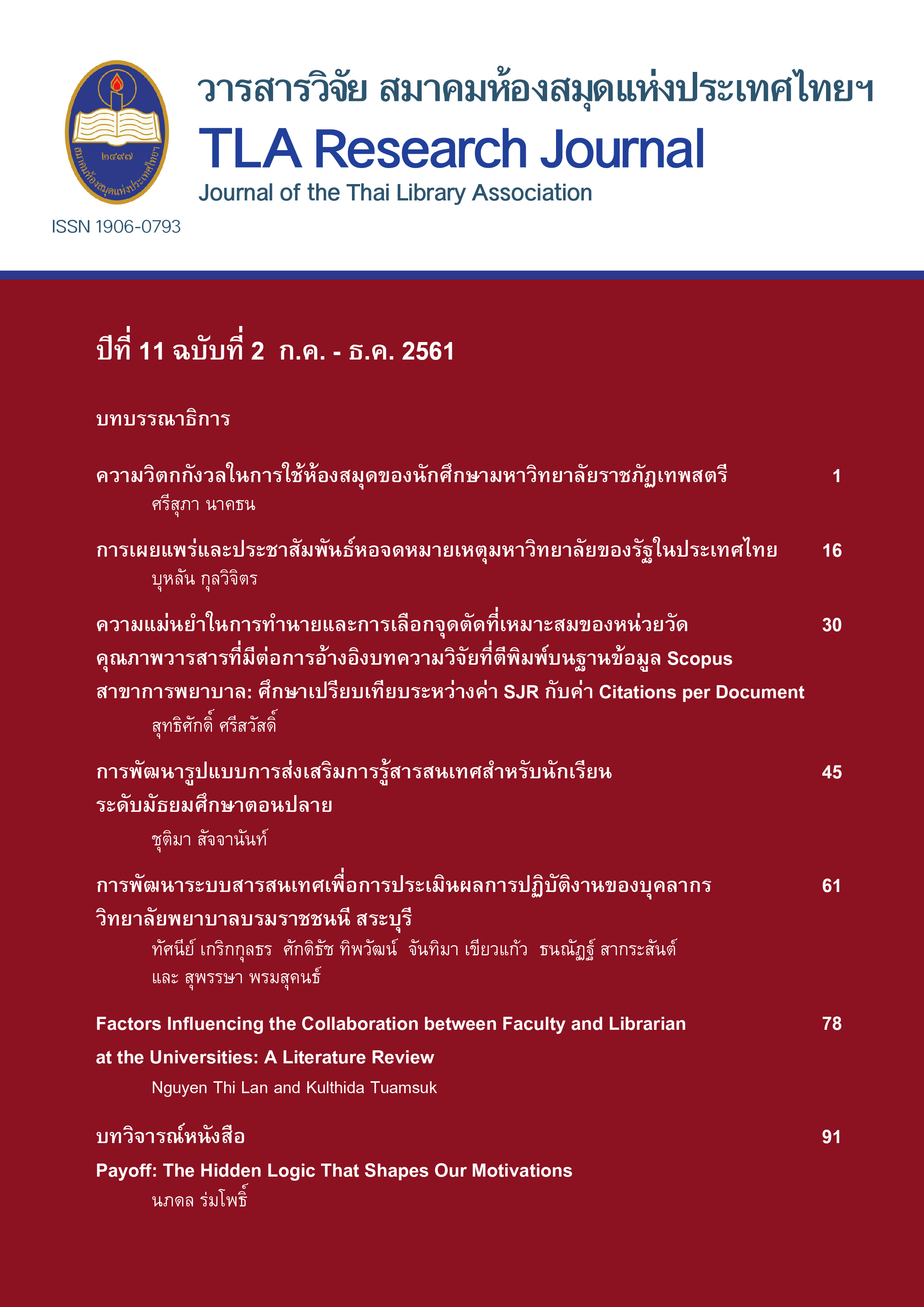Development of Information Literacy Promotion Model for High School Students
Main Article Content
Abstract
This research aimed at studying the information literacy promotion for high school students, developing information literacy promotion model and studying the use of the model. This mixed method research was divided into three phases. The purposive sample consisted of documents, 132 key resource persons, administrators, teacher-librarians and teachers, and 24 senior high school students. Data were collected using documentary form, interview/ focus group interview forms, questionnaires and observation form. Qualitative data were analyzed using content analysis and presented descriptively while quantitative data were analyzed using frequency, percentage, mean and standard deviation.
Research findings showed that: 1) Information literacy promotion for high school students was not a holistic approach to the information literacy process. Various forms have been conducted: the ICT course (computer science) which included information, media and digital literacy; a separate course with different names focusing on library use and research and report writing; the integration of information literacy in the learning standards, course content and leaning management; and student development activities. The world class standard schools offered “Independent Study Course” followed the information literacy process. The implementation of information literacy depends on various factors especially policies, management as well as school administrators, teachers and teachers-librarians, 2) The learner-centered information literacy promotion model for high school students focused on students as the center of development, school administrators, teachers, teachers-librarians, with family and community base. All components had their main roles supporting each other, and 3) The results of the model trial, using three different activities in three schools in Bangkok and in the provinces confirmed the hypotheses that high school students were satisfied at the high level, and the developed model was appropriate at the high level rating by school administrators, teachers and teachers-librarians.
Article Details
บทความทุกเรื่องที่ลงตีพิมพ์จะได้รับการตรวจอ่านโดยผู้ทรงคุณวุฒิ ความคิดเห็นและบทความที่ปรากฏในวารสารนี้ เป็นของผู้เขียนซึ่งมิใช่เป็นความคิดเห็นของคณะผู้จัดทำ และมิใช่ความรับผิดชอบของสมาคมห้องสมุดแห่งประเทศไทยฯ การนำบทความในวารสารนี้ไปตีพิมพ์ซ้ำต้องได้รับอนุญาตจากคณะผู้จัดทำ
All articles submitted for publication will be reviewed by the academic reviewers. The editorial board and TLA claim no responsibility for the content or opinions expressed by the authors of individual articles or columns in this journal. Reprinting of any articles in this journal must be permitted by the editorial board.


